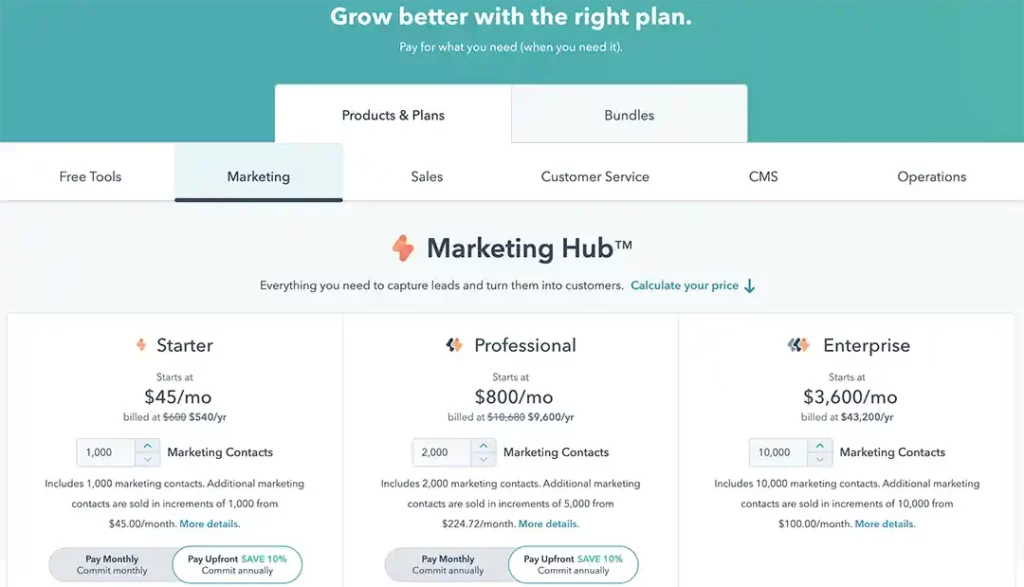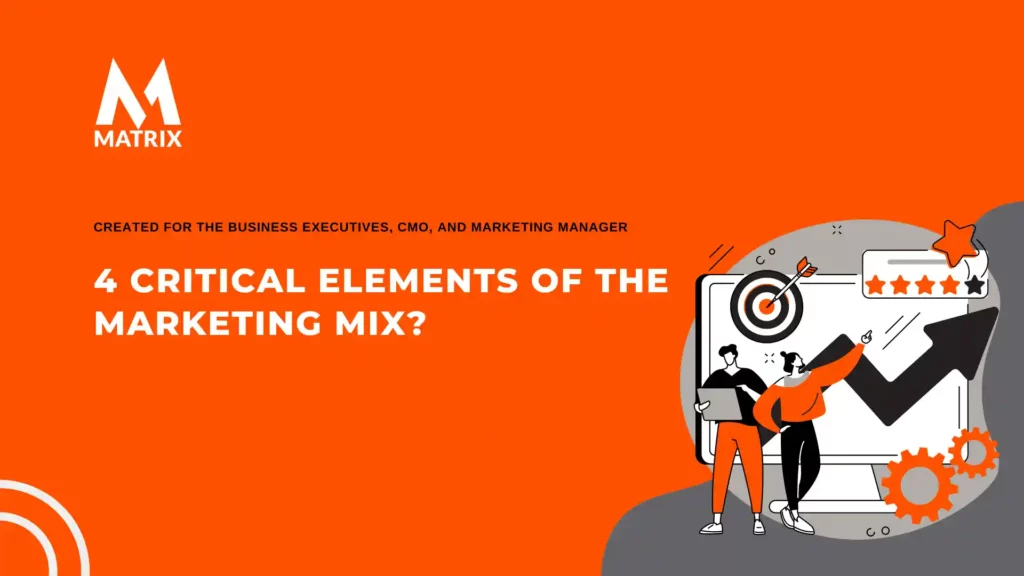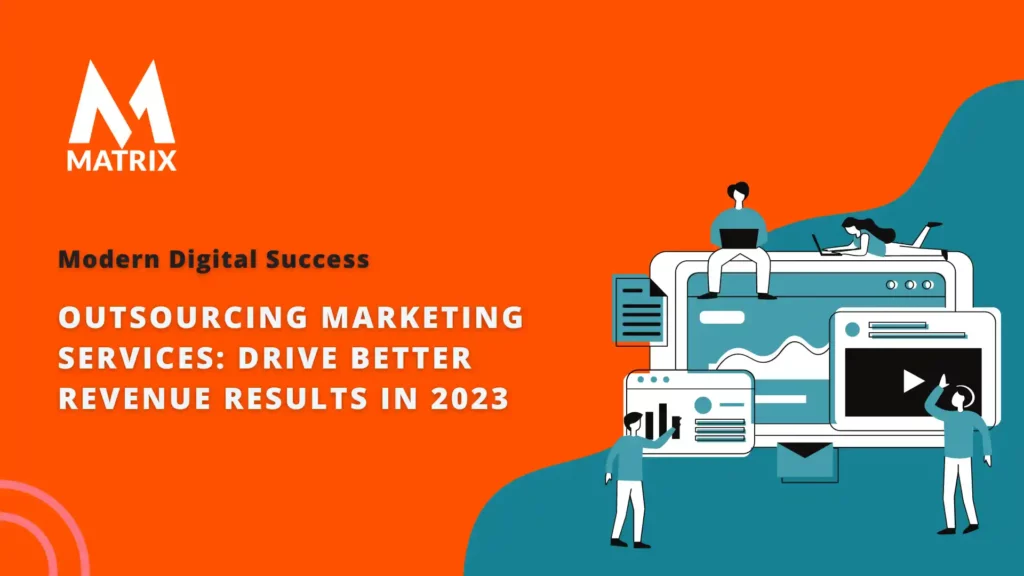The Elements of the Marketing Mix Are Critical for Success
The marketing mix is also known as the 4 Ps, including the product, price, place, and promotion.
A marketing mix is a critical tool businesses use to implement effective marketing strategies. It is often called the “Four P’s” of marketing. These include:
- Product: This refers to what you’re selling, which could be a physical product, a digital product, or a service. This marketing mix component involves understanding what consumers want and needs and creating a product that satisfies these requirements. Factors considered here include the product’s design, features, quality, branding, and the problems it solves.
- Price: This is the amount a customer pays to purchase the product. Pricing strategies can vary widely depending on the product, the market, and the company’s objectives. Price can be affected by discounts, payment plans, and other financial arrangements. A critical decision is whether to position the product as a value offering or as a premium option.
- Place refers to where and how the product is sold and distributed. It can involve physical locations, such as a brick-and-mortar store, or digital platforms, like an online eCommerce website. The place element also includes decisions about inventory management, distribution channels, and logistics.
- Promotion: This involves all the methods used to communicate the product’s features and benefits to the target audience. This could include advertising, sales promotions, public relations, social media marketing, content marketing, and other forms of communication. The objective is to create awareness, generate interest, and stimulate demand for the product.
These four elements must be coordinated effectively to deliver a value proposition that appeals to customers in the target market.
In recent years, some marketers have expanded the marketing mix to include three additional elements, making it the “Seven P’s” of marketing. These additional elements are:
- People: All individuals directly or indirectly involved in the consumption of a service are an important part of the marketing strategy. This includes employees, management, and consumers. The right people are essential for a successful business.
- Process: These systems and procedures deliver the product to the customer, which can significantly impact the customer’s experience. It can involve everything from the website’s user interface to the order fulfillment process.
- Physical Evidence: This refers to tangible elements that customers use to evaluate a product or service before and after they buy. For a physical product, this might be the product itself, its packaging, or a physical store. For a service, it could be the physical environment in which the service is delivered.
These four elements form what has been called “the oldest marketing model in existence.”
The success of a company’s marketing strategy depends on how well each element of the mix is managed.
You might hear about the 7 Ps of the marketing mix, but it’s the 4 Ps marketing mix in college.
The product must satisfy a need or want, be priced competitively, and be available through as many channels as possible. Its benefits must be promoted via advertising and other forms of communication with potential customers.
What are the Elements of Marketing?

As the Chief Marketing Officer, you are likely familiar with marketing and its many forms. But do you know the specific components of a successful marketing strategy?
An effective plan includes recognizing vital elements such as market analysis, setting objectives, positioning products, crafting campaigns, developing messaging, and selecting media channels.
The 4 Ps in the marketing mix are crucial elements that help businesses develop a well-rounded marketing strategy. They consist of Product, Price, Place, and Promotion. These components are important for the following reasons:
- Product: Understanding the product or service is essential for meeting customer needs and expectations. A clear understanding of the product’s features, benefits, and target audience enables businesses to tailor their marketing efforts to resonate with potential customers.
- Price: Pricing plays a significant role in determining the perceived value of a product or service. It affects customers’ purchasing decisions, revenue generation, and overall profitability. A well-thought-out pricing strategy considers factors such as production costs, market demand, competition, and target audience to balance affordability and profitability.
- Place: The place, or distribution channel, refers to where and how the product or service is delivered to customers. The right distribution channels are essential for reaching the target audience, increasing market share, and building brand awareness. This includes considering online and offline channels and selecting the most effective methods to distribute the product or service to the end consumer.
- Promotion: Promotion encompasses all the communication strategies and tactics used to inform, persuade, and remind customers about a product or service. This includes advertising, public relations, content marketing, social media marketing, and other promotional activities. A well-executed promotion strategy helps build brand awareness, generate leads, increase sales, and create a positive brand image.
In conclusion, the 4 Ps of the marketing mix is important because they provide a comprehensive framework for developing and implementing effective marketing strategies.
By paying attention to each of the 4 Ps, businesses can ensure they meet customer needs, create value, and ultimately achieve their marketing objectives.
This blog post will take a closer look at these different parts of marketing to equip CMOs with a better understanding of how each element works together to create measurable results.
Please keep reading to learn more about what it takes for your company’s marketing efforts to be successful!

Identify Your Target Audience – Understand who your customers are, what they need, and how you can reach them.
Understanding and identifying your target audience is crucial for success in the competitive business landscape.
By recognizing who your potential customers are, you gain valuable insights into their needs, preferences, and pain points, allowing you to tailor your products and services accordingly.
This level of understanding enables you to enhance your offering and improves your chances of establishing long-lasting relationships with your clientele.
To effectively reach your target audience, you must employ strategic marketing techniques that resonate with their unique tastes on their frequently used platforms.
As a result, developing a comprehensive understanding of your target audience paves the way for business growth and sustainability, leaving a lasting impact in the minds of your customers.
Develop a Unique Selling Proposition – Determine what differentiates you from the competition and why consumers should choose you.
Developing a Unique Selling Proposition (USP) is crucial for any business striving to differentiate itself from the competition and attract consumers.
As the market becomes increasingly saturated and sophisticated, businesses must identify their core strengths and the guiding factors that set them apart. With a well-constructed USP, a company can successfully communicate its brand values and carve out a distinct niche in the minds of its target audience.
Conducting thorough market research, understanding customer needs, and assessing competitors’ offerings are vital steps toward crafting a compelling USP.
A strong USP ensures that your business stands out and can build customer loyalty, foster long-term relationships, and drive profit and growth in a competitive landscape.
The marketing elements are also known as the 4 Ps.

Every product and service has unique features, and the marketing mix (also known as the 4 Ps) is a key way to ensure those features are communicated to potential customers. The 4 Ps of the marketing combination are vital.
The marketing combination includes the four elements of the name: Product, Price, Place, and Promotion. What is the marketing mix?
A company needs all four things for its message to be heard.
These four elements form what has been called “the oldest marketing model in existence.”
Have you ever wondered what marketing defines? Well, the answer is four elements. But don’t worry if it’s just one too many for you to remember because we’ll break it down into easy-to-remember steps.
The first element: The term “product” can be used in several ways, but most often, marketers will use this word to refer to all of the following:
-> Product – physical goods or services;
-> Product line – all products that are related;
-> Product mix – one company’s full range of competing products and
-> Productivity tool (like HubSpot)- something like the software (intangible) that helps make work easier (physical). This wide definition of a product often makes it difficult to grasp.
So what are the 4Ps?

The 4Ps are product, price, place, and promotion. These four elements comprise the marketing blend, also known as the 4Ps.
The 4Ps are important for businesses to understand because they help businesses create a well-rounded strategy to help them reach their target market and achieve their goals.
Products / Services
The product is, quite simply, what you’re selling. It’s important to ensure that the product you’re offering is something people want or need. You also need to ensure that it can be sold at a profit.
Product development includes determining what product will be sold and its attributes, including quality, size, design, or coloration, among other characteristics that determine its features and benefits.
This determines specifications for packaging or appearance tailored specifically to a particular target audience.
Once these decisions have been made, there is also the need to create demand for the offering by identifying unmet needs to communicate usefulness through slogans and come-on premiums offered with the initial purchase.
Once these decisions have been made, there is also the need to create demand for the offering by identifying unmet needs to communicate usefulness through slogans and come-on premiums offered with the initial purchase.
So, instead of considering an entire company’s full range of goods or services, think about one specific product you use regularly.
For example, this could be the computer you are using right now to read this article, your phone you’re probably reading this on (if not, then your tablet), or clothes (you’re probably wearing some right now unless it’s too hot or too cold), shoes (hopefully clean!), toiletries like toothpaste and soap. These are all physical products.
Physical products are tangible things that customers can see and feel; they provide consumers with certain benefits. But there are also intangible products for purchase, like Microsoft Office 365.
Intangible products are not physical items that customers can see or feel; they provide consumers with certain benefits, but no actual physical product is given to the customer. Another example of an intangible product is a service, like getting your hair done at a salon.
Price

The second element is price. Price is how much customers must pay to obtain a good or service. It’s important to remember that price isn’t just what you see on a tag or in an advertisement.
It also includes any discounts, payment plans, and applicable taxes. When setting prices, businesses must balance making enough money and not pricing themselves off the market.
The price of your product needs to be fair – neither too high nor too low. You’ll also want to ensure it’s comparable to the competition’s prices.
It is also important to note that sometimes, a company might not make any money on the product but rather through another part of their business. An example of this is Amazon.
Although people often think of Amazon as a store, they make most of their money from Amazon Prime memberships and not from selling products. Read more about pricing strategies.
Place
Where you sell your product is just as important as what you’re selling. Finding the right place for your product and ensuring efficient distribution is important. Price elastically should be tested in the marketing elements 4ps.
The third element is place. This is all about where customers can purchase a good or service. It includes deciding which stores will sell your products, how you will distribute them, and whether or not you’ll have an online presence.
A recent study found that in 2021, 52% of all sales in the United States were made online. This means businesses must consider whether they want a physical store, an ecommerce site, or both. There is also the choice between selling goods and services.
Following a year of seismic shifts in online shopping, surges in digital revenue tapered off in 2021 as store sales rebounded. But because ecommerce and offline spending grew at roughly the same rate, online penetration held steady in 2020 at 19%.
Compared with 2019, online sales increased by 50.5%. Amazon also accounted for more than 40% of all U.S. ecommerce in 2021
If the business only sells goods, it will probably need a physical location where customers can shop. If it only offers services, it will probably just operate online.
AIContentPad, an Artificial Intelligence-Powered Digital Content Platform
Imagine eliminating 65% of waste in your marketing programs – wouldn’t that be great?
What if you could generate content better, faster, and more affordable than ever before
AIContentPad is more than just another content tool. It’s a transformative, AI-driven platform designed to elevate efficiency, cut costs, and provide data-driven insights that can radically enhance marketing outcomes.
Promotion
Promotion includes all the ways you get the word out about your product. This can include advertising, PR, social media, and more. It’s important to ensure that your promotional materials are well-designed and effective.
The mix is a tried-and-true way to communicate your product effectively to potential customers. You can use all four Ps to see your product in the best possible light.
The fourth element is promotion. Promotion is about letting people know about your product so you don’t lose sales to competitors.
Promotions include advertising campaigns, social media posts, word of mouth, and packaging design, among other ways for businesses to let consumers know what’s available at their company!
As you can see, there are lots of elements that go into making marketing elements! By understanding these four, businesses can create a well-rounded strategy to help them reach their target market and achieve their goals.
The success of a company’s marketing strategy depends on how well each element of the mix is managed.

The success of a company’s marketing strategy depends on how well each element of the mix is managed. This article will examine the four components necessary to make an effective market plan: product, price, place, and promotion.
We can map buyers’ journeys and optimize content to help address their search and increase pipeline conversions in our digital world.
Lauterborn’s 4Cs
Lauterborn’s 4Cs are a model that can help companies create a successful marketing strategy. The 4Cs stand for the following:
- Company: The first C refers to the business’s internal resources. It includes management, employees, and financial resources.
- Customer: The second C is about the customers and what they want. It includes understanding customer needs and wants and segmenting the market.
- Competition: The third C is all about competition and differentiating your company from the competition. You need to know what your competitors are doing and what makes your company unique.
- Context: The fourth and final C refers to your operating environment. This includes things like economic, political, technological, and social factors.
The 4 Cs also include the company’s core competency–the business’s strengths that it can leverage, such as brand legacy or access to cheap labor (Henderson).
How do the 4Ps relate?

The 4 Ps of Marketing, of the marketing mix, are the framework marketers and advertisers use to focus their strategy around product promotion and distribution to increase sales revenue.
What the marketing mix can do for you must be uncovered in an assessment to find the low laying fruit.
The four Ps stand for:
- Product – what is offered (i.e., goods and/or services);
- Price – how much is charged;
- Place – where it is available; and,
- Promotion – how it is communicated (Buesing and Gremler).
The marketing elements or the 4 Ps of marketing were derived from the concept that a company must consider four specific elements when developing a marketing plan to introduce its product to the market.
Product, price, place, and promotion (Lauterborn 4Cs).
Each area interacts with one another such that changes in one element will affect others. If there is an imbalance among these factors, the marketing program will fail no matter how good each product factor may be.
Furthermore, changes in any single element can have far-reaching effects across all other elements of the strategy (McCarthy and Perre 189-190).
Conclusion and the Marketing Mix
Every company must understand the 4 Ps of Marketing to create an effective strategy. These elements include product, price, place, and promotion.
If you can tap into how your customer’s brains work at different stages in the purchasing process or lead funnel, you may be able to drive more sales with less effort. We discussed the marketing mix and how to apply the 4 Ps of the marketing mix. There are now 7ps marketing mix 4 ps marketing mixes.
The neuroscience sales tips we’ve provided should help you start thinking about leveraging the power of the human brain in your digital marketing strategy. Which cognitive neuroscience principles have you applied to increase your product sales online?
Unleash Your Brand
The invention of the printing press revolutionized the written word, yet it did not bring an end to writing. It is evident through the words you are currently reading that writing continues to thrive.
General FAQs and Elements of a Marketing Mix
What are the marketing mix elements?

These four components are necessary to make an effective market plan: product, price, place, and promotion.
WHat are Lauterborn’s 4Cs?

Lauterborn’s 4Cs are a model that can help companies create a successful marketing strategy.
How does neuroscience help with sales and marketing today?

Neuroscience has helped sales and marketing efforts in several ways. First, it offers marketers insight into consumer behavior to help craft the most accurate mental frameworks of consumers’ thinking. Second, neuroscience can provide marketers with an understanding of how consumers respond to various stimuli, such as color or typeface.
Why are the 4Ps important in marketing?

The 4Ps of marketing is a model for enhancing the components of your “marketing mix” – how you take a new product or service to market. It helps you define your marketing options in terms of price, product, promotion, and place so that your offering meets a specific customer’s need or demand.




